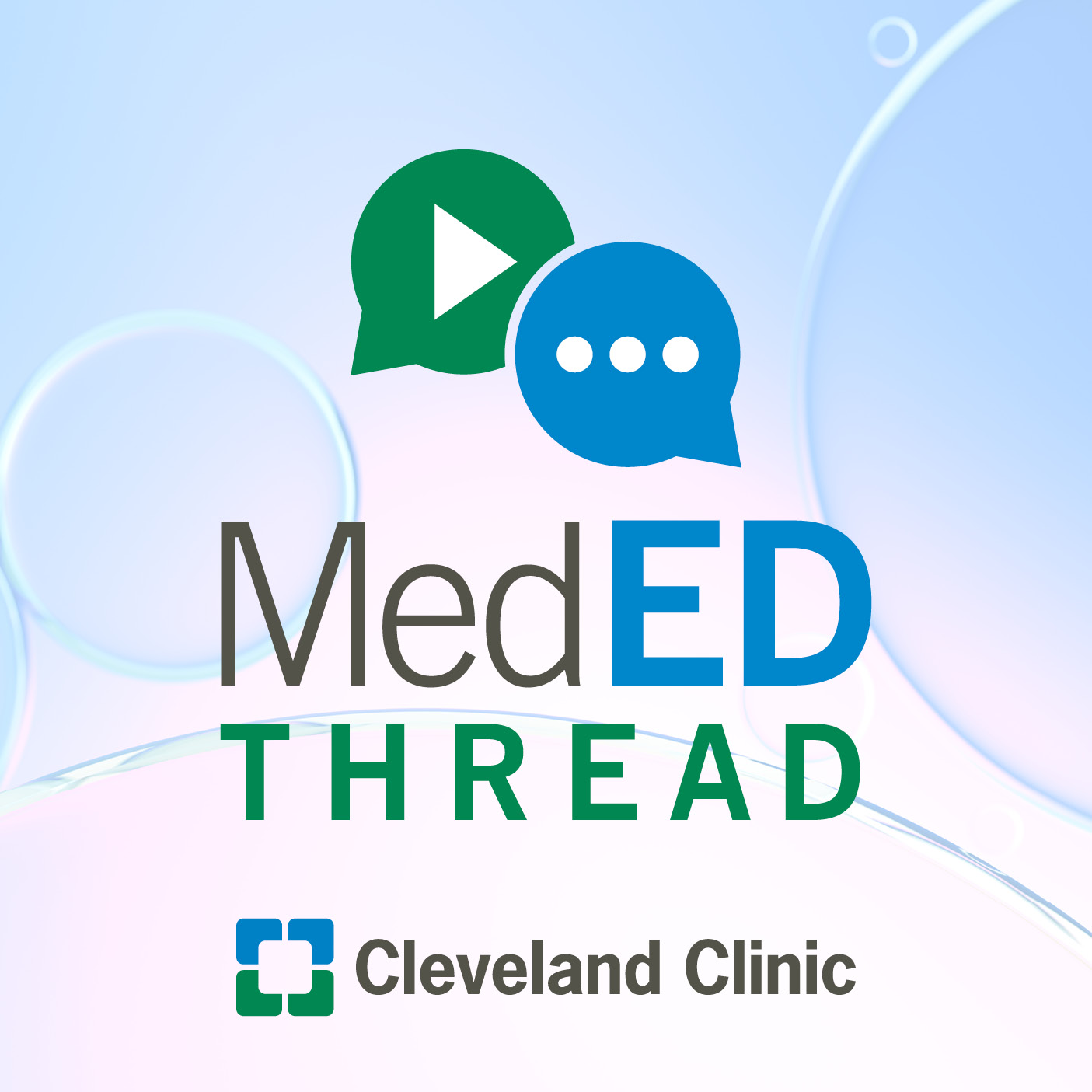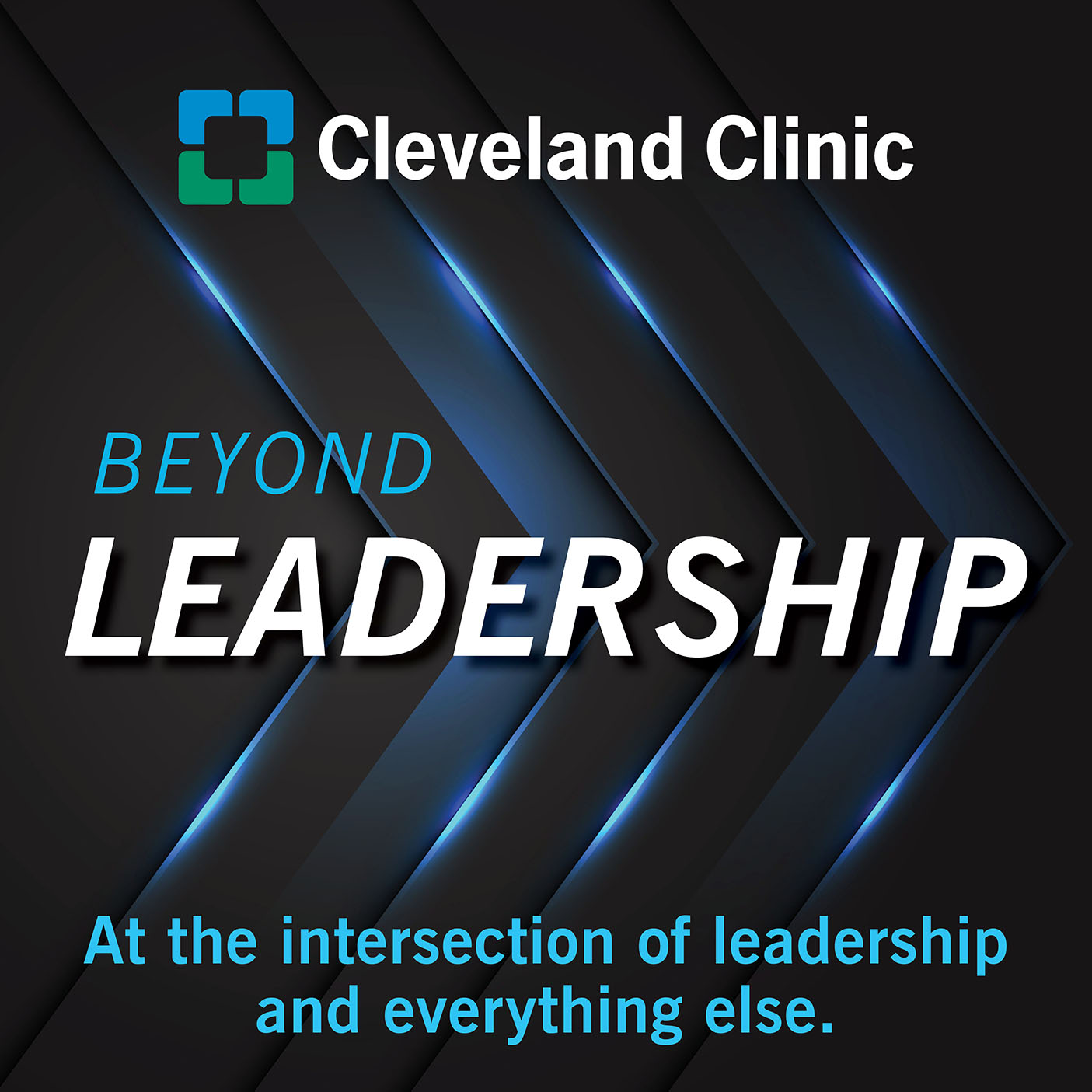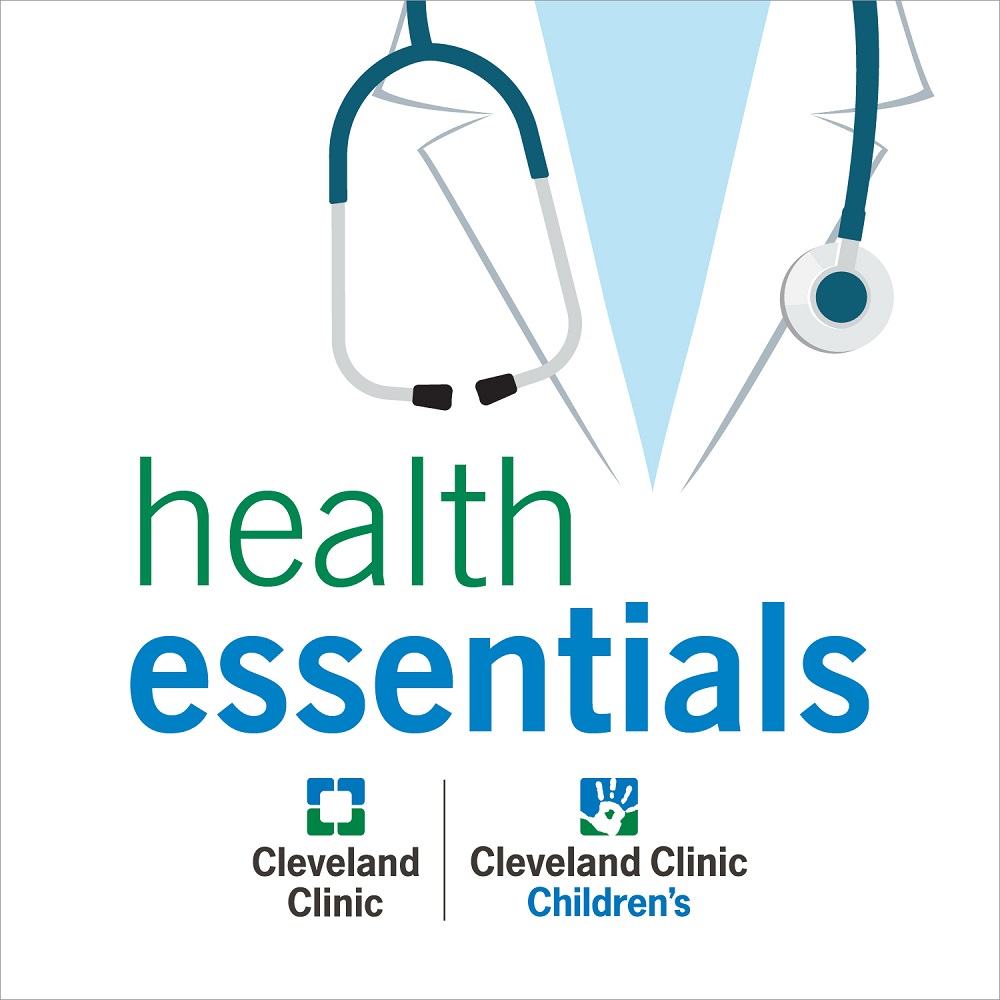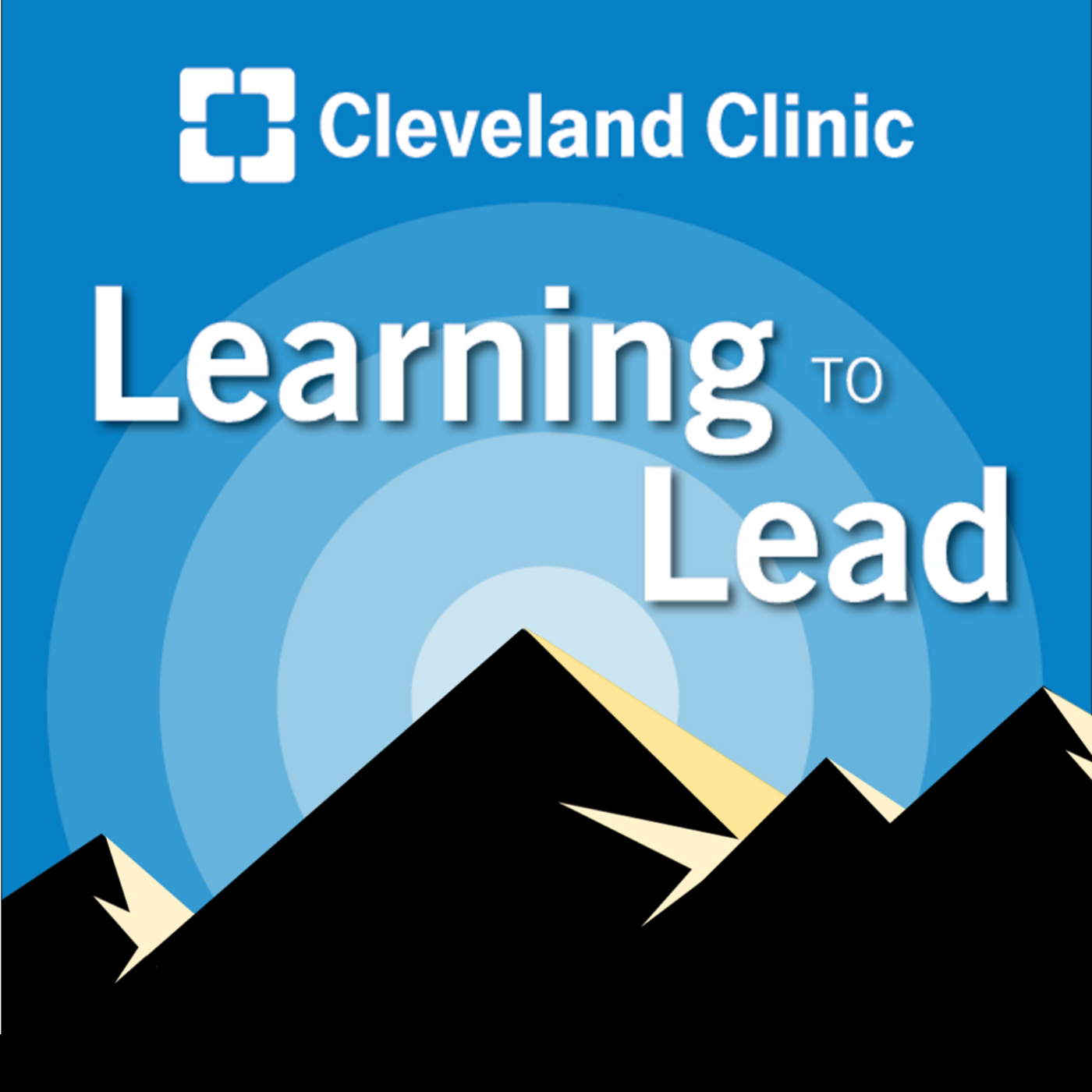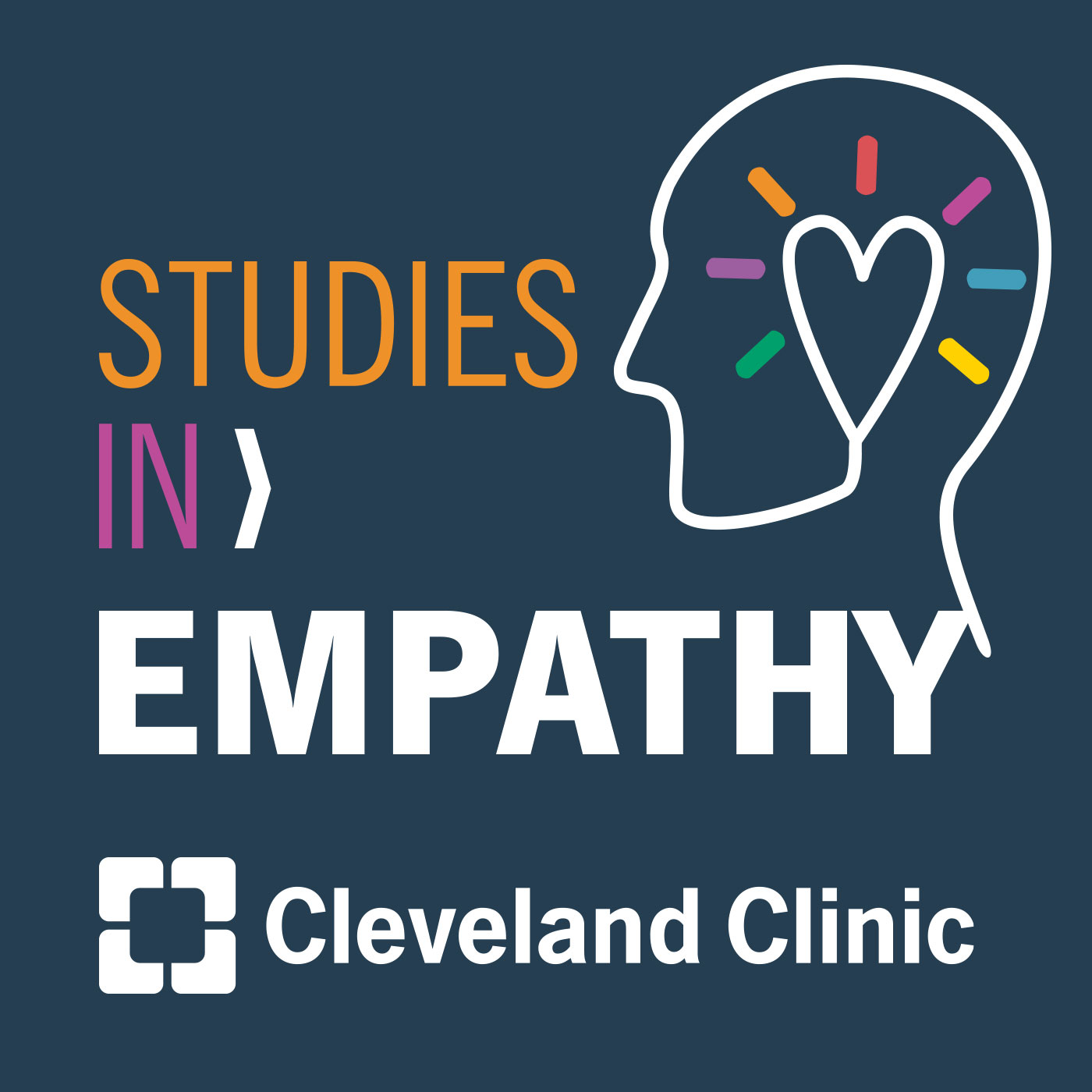Beyond the Bedside: How Cleveland Clinic Trains Residents in Safety and Systems Thinking
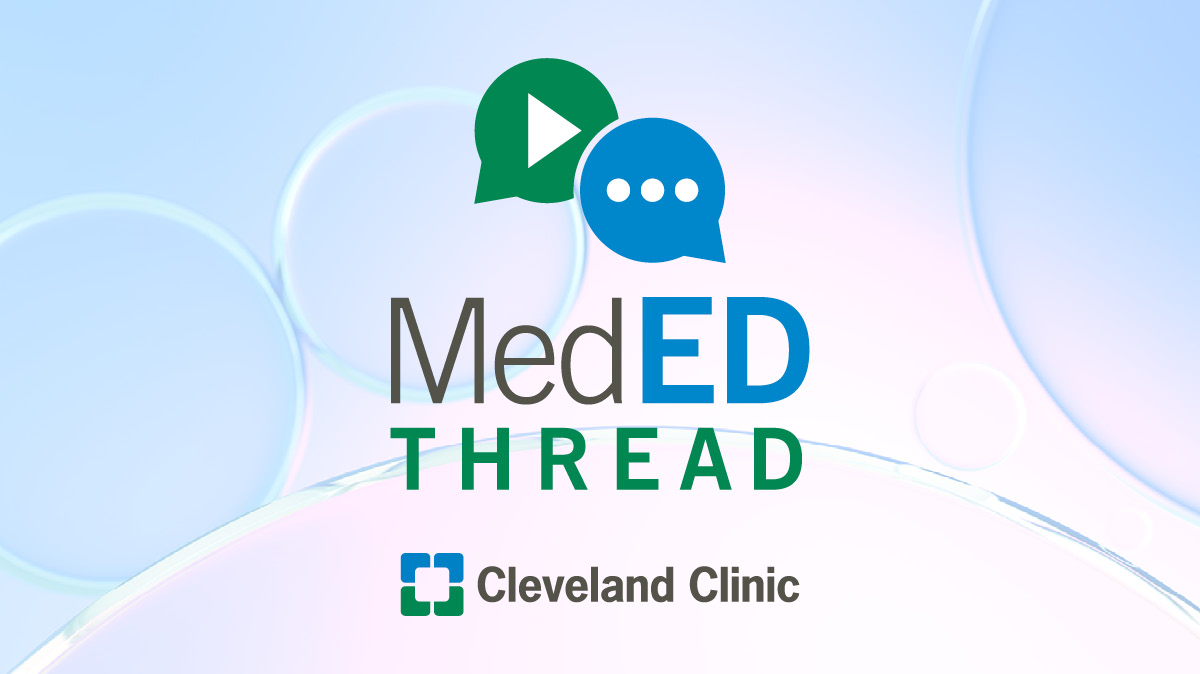
In this episode of MedEd Thread, we talk with Dr. Jessica Donato, Graduate Medical Education Liaison for Safety, Quality, and Patient Experience at Cleveland Clinic, who shares how the institution is training the next generation of physicians to lead with safety, quality and compassion. Dr. Donato explores the essential role of psychological safety, systems-based thinking and interprofessional collaboration in shaping a culture where trainees feel empowered to speak up and improve care. She discusses the evolution of morbidity and mortality conferences, the importance of role modeling and how data-driven insights and team-based quality improvement projects are transforming medical education. Tune in to learn how Cleveland Clinic is preparing residents to become safety champions and change agents in healthcare.
Subscribe: Apple Podcasts | Podcast Addict | Spotify | Buzzsprout
Beyond the Bedside: How Cleveland Clinic Trains Residents in Safety and Systems Thinking
Podcast Transcript
Dr. James K. Stoller: Hello and welcome to MedEd Thread, a Cleveland Clinic education podcast that explores the latest innovations in medical education and amplifies the tremendous work of our educators across the enterprise.
Dr. Tony Tizanno: Hello. Welcome to today's episode of MedEd Thread, an education podcast exploring the vital role of quality and safety training in resident education. I'm your host, Dr. Tony Tizanno, director of Student Lerner Health, here at Cleveland Clinic in Cleveland, Ohio. Today I'm very pleased to have Dr. Jessica Donato graduate medical education liaison for safety, quality and patient experience at Cleveland Clinic here to join us.
Jessie, welcome to today's podcast.
Dr. Jessica Donato: Thanks so much for having me.
Dr. Tony Tizanno: If you would, to get us started, please tell us a little bit about yourself, your educational background, what brought you to Cleveland and your role here at Cleveland Clinic.
Dr. Jessica Donato: Absolutely. So I'm originally from Cleveland. I grew up on the West side.
I am a proud alumni of the Case Western School of Medicine. I did my internal medicine training in Boston at Beths Israel Deaconess. That's really where my passion and love of quality and safety first started. I returned here back to Cleveland and started my job as a hospitalist at the Cleveland Clinic 10 years ago now.
Pretty quickly got involved in medical education through the internal Medicine Residency program. About a year and a half into my time here at the clinic, I became an associate Program director for the IM program. And then I recently started about two years ago as the G liaison and safety quality and patient experience, and really see myself as a quality and safety educator.
That's where my passion lies. Finding that nice mix between my passion for quality and safety, and my passion for medical education.
Dr. Tony Tizanno: Perfect. And, and we need it so much. Thank you. So in today's segment, we'll explore the vital importance of educating medical trainees around quality and patient safety and its impact on the patient experience.
So, Jessie, if you could help us frame today's topic by providing our listeners with some context around this important work and the impetus for it.
Dr. Jessica Donato: Yeah, so as a physician, quality and safety is an absolute key piece of our daily practice, and it's also a key part of our medical training. It's a requirement from the A-C-G-M-E for residency and fellowship programs.
But I think more important than just thinking about a requirement is it's a skillset that's important to build in our trainees so that they can really effectively participate in quality and safety work throughout their careers. It's gonna be a natural part of what they do, whether it's keeping their patients safe and thinking about how to continue to improve their practice or participating in advancing our quality metrics.
I think it's just an unbelievably important thing, and it has two really key skills. Quality improvement projects and safety event reviews in addition to that hidden curriculum piece, which is just contributing daily to our culture of improvement in culture of safety.
Dr. Tony Tizanno: Yeah. The culture of safety, you know, we hear that frequently.
What exactly does that imply and what is needed to actually achieve it?
Dr. Jessica Donato: Yeah, great question. So a culture of safety really has three core components. It's the idea that any caregiver and definitely in, you know, our realm, thinking about trainees, that our trainees are empowered to speak up about safety concerns. That might be through reporting in our safety event reporting system, or simply speaking up and stopping the line in clinical practice. So that's one key component.
The second is that when they speak up, there's no fear of punishment or retribution. And then thirdly, that when they speak up or they report safety events, that they really feel that that's getting tied to some type of improvement.
To get all that to happen takes an army. First of all, it takes active leadership, a lot of psychological safety, and it takes role modeling from their attendings, from their interactions with nurses to really show that team approach to say that we're all here to keep our patients safe. And that safety first mentality is really the way we wanna always approach our care.
Dr. Tony Tizanno: Yeah, I remember hearing one of our leaders say, patients come to the hospital and they come with the idea, I hope you can fix me, but the second thing is, please don't hurt me. And the third was, please be kind to me.
But around that, please don't hurt me, you know, we are expected in our training. Historically, when I look at mine, it was a weakness not to know. But there is so much to know. You know, how do you create that psychological safety to say, you know what, if I'm not sure I can get help? And it's not a sign of weakness to need help.
Dr. Jessica Donato: Yeah. Easier said than done of course. I think as we think about the history of medicine and the kind of inherent hierarchies that we've been taught about, some of that is flattening the hierarchy.
Some of it is normalizing, especially with the role models as attendings. You know, I try to openly admit my mistakes. I admit when I don't know something and I need to look it up. That's an important part of what we do in our daily practice. And that we make mistakes. I try to do a lot of storytelling about mistakes I made as a resident or that I've made as an attending to make that comfort.
And if anyone ever speaks up to say thank you, not why, why did you do that? But thank you so much for speaking. Thank you so much for reporting that's so important. Now let's talk about how we can do better next time because I can do better as an attending and we can do better as a team. And I think that growth mindset is a key component as we think about, uh, culture of safety as well.
Dr. Tony Tizanno: Perfect. So what do we as Cleveland Clinic do to really grow this culture and instill these sorts of precepts in our trainees? I think of things like the huddle and so forth, or timeouts, what other sorts of things or explain even those.
Dr. Jessica Donato: Yeah, so safety is a huge priority here at Cleveland Clinic and it's something that, in my role, I really try to make sure that the trainees are fully ingrained in that.
So that's anything from, we actively encourage and congratulate safety event reporting throughout GME. Actually last year, our House Staff Association Safety Quality and Patient Experience Council did a very friendly team-based safety event reporting competition to just normalize it and to celebrate and to say, here's our data.
We're very transparent on that. We want you to report. Here's some great things that have happened from reporting. We do a lot of efforts to teach about how to report and teaching about how to review safety events and what are the improvement efforts that come from those action plans.
And then the daily safety, which is, you know, thinking about the safety of our lines, tubes and drains. We need to prevent that harm. Do not harm you when I come to the hospital. Don't put me at risk for a clabsi, which is a central and associated bloodstream infection. Don't put me at risk for an infection related to my Foley catheter. Maybe don't give me a fully catheter so I'm not at risk. [Right.]
And then of course, our huge push here is about universal protocol and those safety checklists, which is most importantly in the operating room and a huge part of our trainees voice in that of speaking up and stopping line to make sure that we do our timeouts and all of the components of those safety checklists and at the bedside as well for our bedside procedures. That's a huge part of specific mechanisms we have to promote safety.
Dr. Tony Tizanno: Yeah, I can imagine that if a patient were to see us going through a checklist, they say, now wait a minute, but I mean, consider the complexity of what we do and that likely some level of error is inherent to the complexity.
How can we put this together. So having these best practices and these question lists to guide us, I think are really important. You know, how do you get trainees to say, okay, initially that may seem fine, but as they advance they may say, don't need that. How do we continue to always go back to make sure we do it the same way each time?
Dr. Jessica Donato: Yeah. I think there's a couple different ways to do it. I think, like I've mentioned, a lot of it goes back to that role modeling and the importance, you know, if you're staff surgeon never starts a surgery despite you know, 50 years of experience without doing the safety checklist. That's a really powerful model for those trainees.
I also think evidence, there's a lot of evidence behind that surgical safety checklist to say, you know, this is founded in human factor science. This is an important mechanism because we move too fast. And safety is better when we slow down and are methodical in those components.
And I think the last part is always going back to if that was your mother on the table or that was your father or that was your brother, would you want your surgeon to slow down and do the safety checklist? And I think we'd all say yes. Yes, we would.
Dr. Tony Tizanno: Well said. So, you know, we can't always have our finger on the pulse of everything. Is there a way, since we all have the same goal from one institution to another, that we can compare ourselves in a transparent, yet confidential way that allows us to learn from other people's mistakes as well?
Dr. Jessica Donato: Yeah, absolutely. So lots of external raters and rankers provide the Cleveland Clinic data in addition to most of our academic peers. It's something that we really track ourselves on here, in addition to trying to show that data to our trainees to use a data-driven approach to where we need to improve and to also celebrate where we are excelling.
I think that's something that it's really the use of kind of big data. And oftentimes that can be hard for a frontline caregiver to really understand or for a trainee to understand. So really helping to curate that, to make it really actionable and to say, Hey, we're doing great here. You know, we are the top cardiac center in the world and this is where we do really well, and here's where we can keep improving based on data.
And our peers are doing well, or maybe they're struggling in the same things and these are things they're trying in here and things that we're gonna try. And then of course, going back as much as we can to evidence and what's being published in the literature to really drive some of that improvement as well.
Dr. Tony Tizanno: So we know that working at Cleveland Clinic and being a physician here is a team sport. So we're actually extending that idea of a team sport beyond our institution to bring in like institutions and others that might be able to benefit. In our earIier discussions, you mentioned some of the end game sorts of goals and pieces of the curriculum that were important, and you mentioned things like morbidity and mortality report.
What is that all about? How is that used to further this?
Dr. Jessica Donato: So, you know, decades ago, M and M's morbidity and mortality conferences were historically being put on the chopping block. It is no longer like that, and this is across any specialty that you'll see. We really focus on systems based M and M's now, or systems based quality conferences.
Some don't even use the kind of sometimes antiquated term of M and M's any longer. We really focus on the idea that our system is flawed, our processes are flawed, and that humans are flawed. And focusing in to say, okay, what are the issues at the systems level and the process level that we can improve upon so that no matter what resident or what fellow or what attending you put in that scenario that we are set up for success in keeping our patients safe and improving their outcomes.
So I think that's the approach we're taking more both in those m and m conferences and also empowering and teaching our trainees to do those systematic reviews of safety events, whether it's a readmission or a mortality or even a near miss. Which means a patient wasn't harmed, but they could have been.
[Could have been.] Let's look at it and really assess and improve our system.
Dr. Tony Tizanno: Excellent. You also mentioned some of these programs that you put together with trainees that are team-based quality initiatives. What, what do those look like?
Dr. Jessica Donato: Yeah, so all of our trainees are hopefully involved in quality improvement projects. It's a key part of their training requirements. Many are doing multiple quality improvement projects throughout their training and they're doing it in their local teams.
We always encourage that interprofessional approach, getting non-physicians involved and leading and tackling problems that are important in their local environment, but also tied to our key priorities at an enterprise level as well.
So through graduate medical education, we have standardized quality improvement educational materials to really empower them with the knowledge and skills as they do these quality improvement projects locally in the team sport environment of their local programs and clinical spaces.
Dr. Tony Tizanno: When doing that, do you draw in some of the other folks in healthcare too, scrub techs, nurses, what have you, to work with the trainees so they can begin to see them as equals? In the war against error, shall we say.
Dr. Jessica Donato: We, we definitely encourage and try. I, I think in today's busy climate where everyone has a high workload, sometimes it can be really challenging to get them actually at the table during that protected time or during that team time. We definitely encourage that we don't do quality to people, that we do them with our colleagues.
And so really focusing in on their perspectives and their component in the process and workflow and how we can tackle those problems together even if they're not directly capable of having a seat immediately at the table just given complexity of scheduling.
Dr. Tony Tizanno: Yeah. I look at my own training in obstetrics and gynecology, and I think as a first year resident, how much I relied upon the labor and delivery nurse. You may be shown a few times how to do a delivery, but then you never know when something unusual is going to happen, and more often than not the nurse in that room with you has seen it 20 times and you've never seen it before.
And so being willing to take information from someone who you know isn't a physician, we have to be open-minded. I think flattening that hierarchy, you mentioned that earlier, I think is really important. Thoughts around that?
Dr. Jessica Donato: Oh, absolutely. And I think, you know, another key place this is really exemplified is the way that we do our bedside rounding here at Cleveland Clinic. With the plan of care visits, to say the nurse's voice is really important. The patient is at the center of that, but the nurse spends oftentimes 10 times more minutes per day than we do at the bedside, and our patients can't be safe without them.
And
Dr. Tony Tizanno: very good point.
Dr. Jessica Donato: Focusing on that as a key component in the operating room unbelievably important to say, you know, we want that nurse to tell you if you broke the sterile field. Right? It's their duty to speak up.
And if we don't encourage that, just like we encourage our residents to speak up, if the attending does something that it's all about our teams. I think it, you know, it's just something that you gotta see and you gotta appreciate in your actual environment and you know, it takes time. Yeah. I think it takes time to really understand it.
Dr. Tony Tizanno: It does. And you know, I think that when patients see it happening, it reinforces their feeling of this is a team and they're both here to do the best we can do.
I do it simply with hand washing. I may go into a room, see someone at first, and then my nurse comes in secondarily to chaperone during the exam and whatever. And I said, if you don't see me wash my hands, or you didn't see me wash my hands, ask me if I did or even ask me to do it again.
And I always thank them. And I think when patients see that they stop for a second and think, well wait a minute, there's more than one person looking out for me here. And I think it just builds that whole idea.
So when you look at all of these efforts within this domain and hopefully demonstrated improved attitudes and knowledge and behavioral changes, is there a way to measure that and do you you see the needle moving?
Dr. Jessica Donato: I do, I think, you know, we have amazing trainees here at Cleveland Clinic. They're very engaged in safety and quality. Every kind of time I, I start a new project or I just advance in my years here, I see more trainees who are interested in quality and safety. They're spearheading projects locally or wanting get involved at a larger level.
We have a lot of interest every year in our house staff, safety quality patient experience council, where our trainees are leading important efforts. And our safety event reporting keeps increasing every year. It's over 50% increase from kind of the period of the pandemic.
Our trainees are involved and they're doing great work. They're getting scholarly efforts from their quality and safety work, which is really great to see. And my hope is that we'll keep building our army of trainees [sure] that are going to continue to improve both the current culture, but also those are gonna be our leaders to come who will hopefully be modeling those really important safety, quality behaviors.
Dr. Tony Tizanno: So we talk about trainees, and that's obviously our emphasis, but how do you train the trainer to provide for, you know, psychological safety so people feel comfortable coming forward? Because as I listen to you speak, I think to myself, you are the perfect person to do this because you're so approachable.
How do you start to build that among persons who have to do the same sort of thing you do?
Dr. Jessica Donato: Yeah, great question. So I think there's two components of the faculty development. So there's the formal quality and safety educator piece, which is, you know, something I'm actively working on to find more faculty are skilled to, you know, coach the trainee QI projects to help them with their safety event reviews, the people with that passion, who want that to be an educational focus of which we've created some nice programs to start to develop that workforce.
For the hidden curriculum, the clinical learning environment where every physician, every attending needs to model it because our trainees interact with hundreds of faculty, and that's harder. That's harder to do because we all come with our own vantage point and our own baggage of what's important to us. And I think that really is where your team dynamic and truly your culture comes from.
Is your team and your culture engaged in psychological safety, debriefing safety events, checking in, focusing on your quality metrics? That's really that component where it takes the active leadership and, and the masses to really move the needle there. Much harder to do.
Dr. Tony Tizanno: It is. It is. Well, excellent efforts.
So what's on the horizon in this area of quality and safety education?
Dr. Jessica Donato: Yeah, I hope to continue to kind of grow and expand some of our curricular efforts. We've built a lot of universal educational materials that hopefully we're gonna continue to get more uptake from our programs. We have a lot of really early adopters and programs that are doing outstanding work.
And hope to continue to build our trainees into these experts where they can pipeline in early as those quality and safety experts.
This year we got to pilot a graduate medical education, safety quality, patient experience, leadership track, where we got to work with five trainees from across different programs who now have an unbelievable expertise where they could auto launch into being quality and safety leaders in their local programs or quality and safety educators as well.
So I think more things like that. And then also bridging that gap with innovations teams and informatics to really focus on where healthcare is going. Ai, you know, epic, different components where that partnership is gonna be more important than ever.
Dr. Tony Tizanno: Yeah. And there are so many pieces I think of Epic and I think of myself going back and starting to practice again, and I look at Epic trying to find my way through if I didn't have my medical assistant or nurse there to help me to do the right thing. And I'm not afraid to ask for help.
Going back I am not afraid to ask for help whenever I like to think I know what I don't know. And that comes with time. That's a bit of wisdom, I think. But it's so important.
You know, I think that the AI thing is another piece that is, I just look at the two years that we've been doing these podcasts are thoughts and questions around chat GBT and AI then and now is unbelievably different. It's moving at such a pace. It's incredible. I wonder what that will bring to the table for us.
So we talk about the normalization of deviance. This idea that, you know, you've been doing this procedure for so long, you wash your hands for just a minute, you don't really do a long scrub, and you've gotten away with it.
You know, it, it brings to mind the idea that having someone new who's received the training that you're providing for these trainees, but doesn't have a notion of what they can get away with, might be better fodder for a safety person on the team then the guy like me who's been there for a long time. Is there anything to that?
Dr. Jessica Donato: Yeah, I mean, normalized, deviance and even just simple workarounds are so abundant in healthcare, right? Our processes are not ideal yet, and I think focusing in on that as a safety quality component to say, you know, see it, speak up, report it, and let's improve it. And yeah, maybe that's a safety quality person who's gonna do that.
Or maybe that's just we increase awareness of this to say why do we keep skipping the med rec, for example? That's an example of normality means, right? Like, oh, it's probably already accurate. I'm just gonna skip that component. Or we skip taking the history or you know, doing allergy confirmation 'cause it's probably in epic and we are limited on time.
But to say, well why? Why are we doing that? Let's report it and let's fix it and get back to those basic good, thorough histories and confirmations of all the things we learned in med school when admitting a patient, for example.
Dr. Tony Tizanno: Yeah, before we had to go back in the chart and look for it. Now it's just there in front of us. We can just glance over it and maybe that's one of the things we have to impress ourselves.
Well, thank you so much, Jessie. This has been an inspiring and wonderfully insightful podcast To our listeners, if you would like to suggest a medical education topic to us or comment on the episode, please email us at education@ccf.org.
Thank you very much for joining, and we look forward to seeing you on our next podcast. Have a wonderful day.
Dr. James K. Stoller: This concludes this episode of MedEd Thread, a Cleveland Clinic Education podcast. Be sure to subscribe to hear new episodes via iTunes, Google Play, Stitcher, Spotify, or wherever you get your podcasts. Until next time, thanks for listening to MedEd Thread and please join us again soon.
